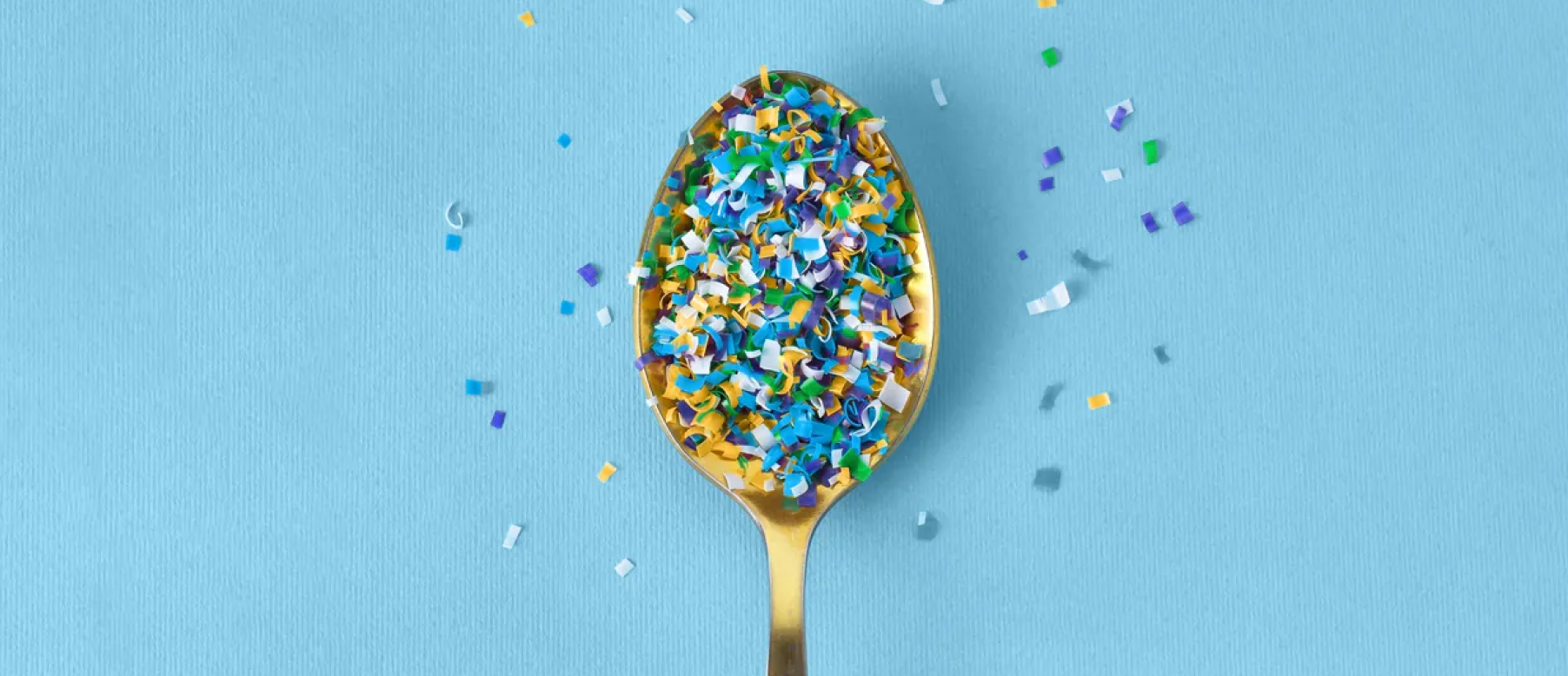What are Microplastics?
The Hidden Threat in Our Food
- Doug Reffue
- September 26, 2025


What are Microplastics and Why are They So Dangerous to Our Bodies and Brains?
Microplastics are tiny plastic particles less than 5 millimeters in length. While much attention has been given to microplastics in the oceans and wider environment, these pervasive particles are also a significant concern right in our kitchens, directly impacting the food we consume.
These microscopic fragments originate from the degradation of larger plastic items, and their small size allows them to easily enter our food chain. Once ingested, microplastics can travel through our digestive system, and some studies suggest they may even cross biological barriers, potentially reaching organs beyond the gut, including the brain.
The danger of microplastics lies in their physical properties and chemical composition. They can act as carriers for harmful chemicals already present in the plastic, such as phthalates and bisphenols (BPA), which are known endocrine disruptors and forever chemicals. These chemicals can interfere with hormonal systems, potentially leading to developmental, reproductive, neurological, and immune disorders.
Microplastics can also absorb other environmental toxins, effectively concentrating them and delivering them directly into our bodies. The physical presence of these particles can also cause inflammation and cellular damage, posing a silent but significant threat to our overall health and well-being.
Here’s what 5 health experts had to say about Microplastics:
Sarah Jenkins, Food Safety Advocate at Pure Kitchen Initiative.
Dr. Robert Sterling, Neuroscientist at Brain & Body Research Center.
Professor Anya Sharma, Public Health Researcher at Global Wellness University.
Dr. David Chen, Toxicologist at National University of Health Sciences.
Dr. Eleanor Vance, Environmental Health Specialist at GreenHealth Institute
5 Ways Microplastics are Introduced to Our Food by Kitchen Products and Prep
Microplastics are often unintentionally introduced into our food through everyday kitchen practices and products. Understanding these pathways is the first step toward minimizing exposure.
1. Plastic Cutting Boards: Every cut made on a plastic cutting board can release tiny plastic fragments, which then mix with the food being prepared.
2. Plastic Food Containers: Storing hot food in plastic containers, or heating food in them in the microwave, can accelerate the release of microplastics and associated chemicals into the food.
3. Plastic Utensils and Spatulas: Using plastic utensils for stirring or scraping in hot pans, especially non-stick cookware, can cause them to degrade and shed microplastics into the meal.
4.Plastic Wrap and Bags: When plastic wrap comes into direct contact with food, particularly fatty or acidic foods, microplastic particles and chemical additives can leach into the food. Similarly, storing food in plastic bags can lead to similar contamination.
5.Plastic Water Bottles and Reusable Plastic Cups: Repeated use, washing, and exposure to temperature changes can cause these items to degrade, releasing microplastics into the beverages they hold.
10 Simple Swaps for a Plastic-Free Kitchen
To significantly reduce the introduction of microplastics into your food, consider making these immediate swaps in your kitchen:
| Current Product | Recommended Swap | Benefits of Swap |
|---|---|---|
| Plastic Cutting Boards | Wooden or Bamboo Cutting Boards | Durable, naturally antimicrobial, and do not shed particles into food. |
| Plastic Food Containers | Glass or Stainless Steel Containers | Heat-safe, non-leaching, and ideal for storing and reheating food without chemical contamination. |
| Plastic Utensils and Spatulas | Silicone, Wood, or Stainless Steel Utensils | Heat-resistant, gentle on cookware, and free from plastic shedding concerns. |
| Plastic Wrap and Bags | Beeswax Wraps, Silicone Food Covers, or Reusable Cloth Bags | Sustainable, breathable, and eliminate direct plastic contact with food. |
| Plastic Water Bottles and Reusable Plastic Cups | Stainless Steel or Glass Bottles/Cups | Durable, maintain beverage temperature, and ensure no plastics leaching into your drinks. |
| Plastic Colanders | Stainless Steel or Silicone Colanders | Non-reactive, durable, and won’t shed microplastics when in contact with hot food or water. |
| Plastic Measuring Cups and Spoons | Stainless Steel or Glass Measuring Cups and Spoons | Precise, durable, and do not leach chemicals or microplastics into ingredients. |
| Plastic Small Appliances (e.g., blenders, food processors) | Glass-Carafe Blenders, Stainless Steel Food Processors | Opt for appliances with glass or stainless steel components which resist exposure to plastics, reducing degradation and leaching. |
| Plastic Storage Bags (for freezer) | Reusable Silicone Freezer Bags | Airtight, durable, and a safe alternative for freezing food without plastic contact. |
| Plastic-Lined Coffee Makers | Stainless Steel or Ceramic Coffee Makers | Reduce exposure to plastic during the brewing process, especially with hot water contact. |
A Hopeful Path Forward
While the presence of microplastics in our food can be concerning, there is a hopeful aspect to this challenge. Our bodies are remarkably resilient and possess natural detoxification mechanisms. By actively reducing our exposure to microplastics through conscious kitchen swaps and mindful food preparation, we can significantly decrease the continuous influx of these particles into our systems. Emerging research suggests that once the constant introduction of microplastics is curtailed, our bodies may have an enhanced ability to naturally eliminate accumulated particles. This proactive approach not only safeguards our immediate health but also empowers our bodies to begin a process of natural cleansing, paving the way for a healthier future.
Get the latest news
and product updates for your zero-plastic kitchen.

